Do you know what is mango known as? Aam, as we call it in India is crowned with the title of King of Fruits. Mango Farming is the most dominant and money-making venture in the world.
It is loved and relished for its taste, appearance, and low upkeep cost. The perk of cultivating mango is that it can be consumed at any stage.
Like the raw mango has a delightful taste as chutney, Aam Panna, pickle, sauce. A full grown, mango can be consumed as shakes, juice, jelly, ice-cream, and desserts.
India exports a huge quantity of mangoes to the USA, Europe, and Middle-East. Mango farming is the most money extracting fruit grown in the Indian sub-continent.
If you want to start your mango farm, you need to gather all relevant about its cultivation. Here, is an outline of important steps to be executed to ensure good mango production.
Types of Mangoes
Here is a list of mangoes with their place of origin. Let’s get a quick look through it:
- Alphonso- Ratnagiri, Maharastra
- Kesar- Junahgadh, Gujarat
- Dasheri – Lucknow, Uttar Pradesh
- Himsagar and Kishan-bhog, West Bengal
- Chausa- Uttar Pradesh
- Safeda -Andhra Pradesh
- Totapari
- Amrapali
- Langda
Sweetest mango variety
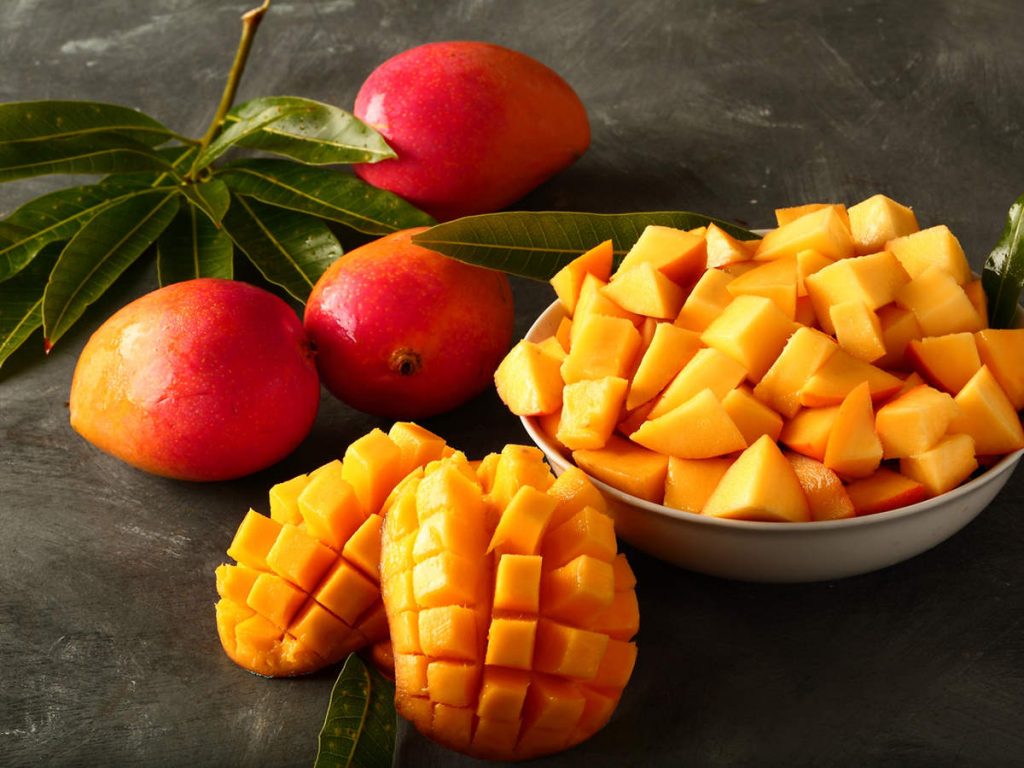
For all the beginners and mango lovers, it is difficult to figure which the best variety of fruit among all. Carabao, the manilla mango is the best and sweetest mango in the world.
However, if we talk about Indian mangoes, Alphonso, the king of all is the best and sweetest mango among all. But don’t forget that mango itself is a sweet fruit loved by all. Every variety is sweet and unique in its way.
Requirements for mango farming
Mango can be planted through seeds or by vegetative propagation. The propagation is carried out through techniques like veneer grafting, epicotyl grafting, and inarching.
Surely, vegetative propagation is a rapid process of germination. It should be carried out through grafting trees.
The spacing of mango trees
The spacing pattern of the trees should be 10 m * 10 m. This is the ideal pattern to be followed to ensure a good yield.
The mango trees are tall and wide. So, they require adequate space to expand themselves. If you compromise with its space, the growth of the tree would be hampered.
As a result, you will be deprived of a desired and profitable yield.
Mango plants training
Training mango plants is an essential step to ensure the proper shape of the fruit. It becomes unavoidable in the case of low branched grafting.
The plant should attain a minimum height of 1 meter for training to be executed well. Regular trimming of branches and leaves ensures th healthy growth of the plant.
The plantation is disease-free and the energy of the plant is centered towards the growth only. Therefore, a continuous training process is maintained to get the desired fruit quality.
In mango farming, it is a mandatory step.
The season for mango plantation
For rain prone areas, the plantation is done in July-August, for irrigation-based areas it is carried out in February-March, and at the end of rainfall in rain prone areas.
Rainfall is a good factor to enhance the growth of the tree. As heavy water intake is needed for the thriving of mango trees.
Also Read: Custard Apple Farming Was Never So Fruitful – Read This Guide Till The End
Fertilization of mango trees
The process of fertilization is carried out in 2 doses. First one, immediately after planting, and the next in the young plants. A spread of urea (normally 3%) is advised in the case of sandy soil before the plant starts flowering.
Soil and light requirement for mango seeds
A mango seedling requires a good amount of sunlight but not direct sunlight. For nurturing the plant, a minimum of 6 hours of sunlight is required and 8-10 hours of sunlight will work wonders.
When planting mango seeds it should be kept in mind, that a good drainage system should be there. Like on watering the soil could flush out excess water.
In summers the plant needs water in excess, do remember excess doesn’t mean water overflow. The water should be well enough to keep the soil hydrated.
How to sprout a mango seed
To sprout a mango seed you need to remove the flesh from the fruit, the seed needs to be cleaned, to ensure that they are ready to plant.
Now, with the help of a sharp knife, chop off the edges of the seed. Ensure the visibility of the pod inside.
Take a container of 11 liter capacity. Place some soil beneath the container providing an outlet at the edge. For settling the soil fill some water in it.
The container is ready to plant the seed inside placing the pointed side downwards. One-fourth of the pod should be popping out of the soil.
Keep watering the seed and place it in a warm place ensuring sunlight but not directly.
Germination time of mango seed
The mango seeds germinate in a period of 2 to 4 weeks. A fully grown-up tree bears fruit in 5 years. These mango seeds germinate at a temperature range between 4-40 degrees.
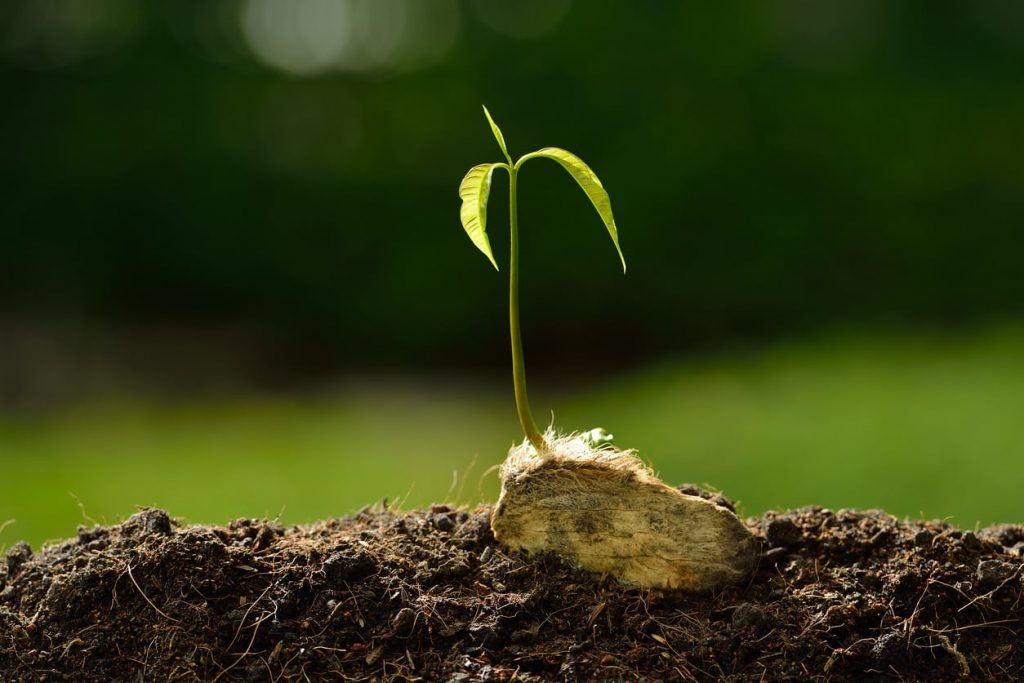
But a higher range of temperature is ideal for germination. Seeds restore water in them, dies when dry. All the favorable conditions facilitate the process of germination.
A small bunch of leaves shoots up and the roots start getting firm deep into the soil.
Planting mango seed
A suitable temperature, enough sunlight, and adequate water content is a perfect recipe for healthy fruit. When you have all the necessities for mango farming, you can go for it.
You need to have a spacious place for the mango canopy. A mango tree has a stature of 90 feet with long leaves. So, it is recommended to plant them separately allowing proper space for them to thrive.
How long does it take a mango tree to grow?
This is the most common query among mango farming. Beginners are curious to know how long does it take a mango tree to grow? Before proceeding, this question needs to be answered.
From planting the seed in the soil to ultimately bearing fruits, it is a package of 5 years. It takes 5 years complete for a mango tree to produce your favorite mango fruit.
But a lot of rigorous hard work is required to nurture the mango plantation in these 5 years. Regular pruning of branches and leaves is necessary. Plus, after bearing flowers the water intake of the tree is around 26 gallons per week.
This should be maintained to prevent the tree from drying. The proper spread of fertilizers should be done to curb the spread of diseases.
The resultant is the delicious, tasty, and lip-smacking mango fruit.
Diseases infecting mango farming
Mango farming is threatened by aphids, bugs, and mites. Infections prevailing in the plantation can be witnessed in the form of webs on the leaves, white residue, or insects crawling over the leaves.
These infections need to be curbed in, timely before they hinder the growth of the plantation.
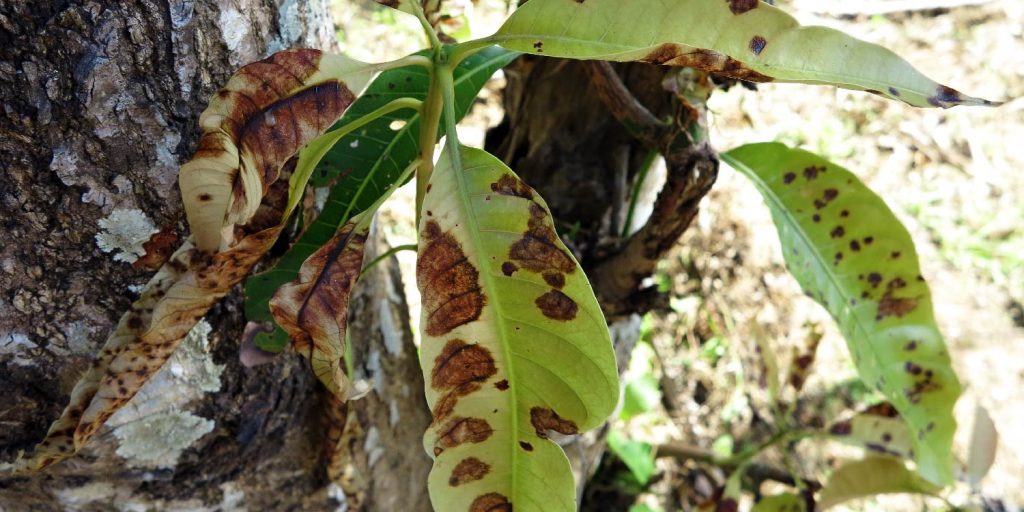
Mango farming is prone to anthracnose, a sort of fungal infection. They can be checked by the use of copper-based fungicide. It should be used after 14 days of planting.
How to take care of flowering mango tree
Some of the flowers are formed through the process of self-pollination. However, few of them are pollinated through fruit bats, humming birds, and bees. It must be noted that all the flowering trees don’t produce fruits.
Taking care of a flowering mango tree is a must. Proper care must be taken of those trees who produced heavily during the previous season.
They should be trimmed regularly. And should also provide more fodder to ensure a better flowering and fruit production in the present season as well.
The much-branched inflorescence needs to be detached or trimmed compulsorily. It ensures better flowering and fruit production.
In the regions where the evening temperatures trips below 30 degrees, these white creamy flowers become steady. On reaching the temperature range back, they tend to bear fruits immediately.
Mango yield per acre
The mango yield per acre varies. This depends on the quality of seeds sown and the good upkeep of the mango farming. Ideally, the yield ranges from 2.5 to 3 tonnes per year. Exceptionally, it can reach 9-10 tonnes per year.
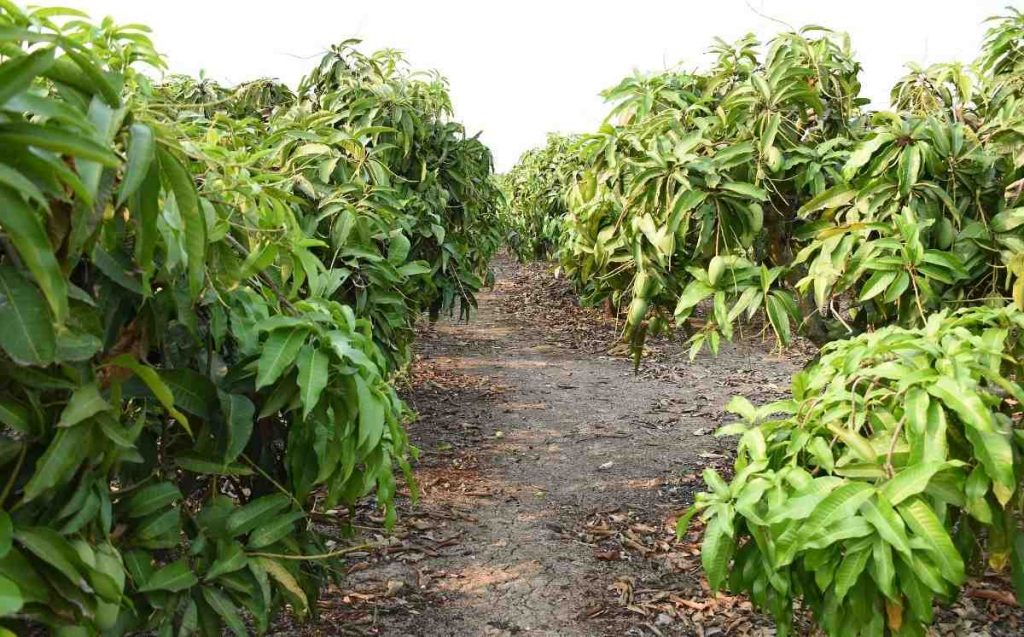
A good spacing in the orchard, among the trees, and favorable climatic range shoots up the yield of a mango farm.
Mango farmers must adhere to these 2 most important factors apart from other upkeep necessities. A little extra care can make you earn higher profits.
When to harvest mango?
After flowering and bearing fruits, now the point arise when to harvest mangoes. The tasty tropical fruit of mango is grown in various parts of the world, favorable to mango farming.
The harvesting of the fruit is directly proportional to the amount of care taken of the tree in the 5 years of the plantation.
On average a good harvesting time prevails after the completion of 100-150 days from the flowering stage. Generally, flowering ends up producing fruits and you can observe the fruit grow in shape and size.
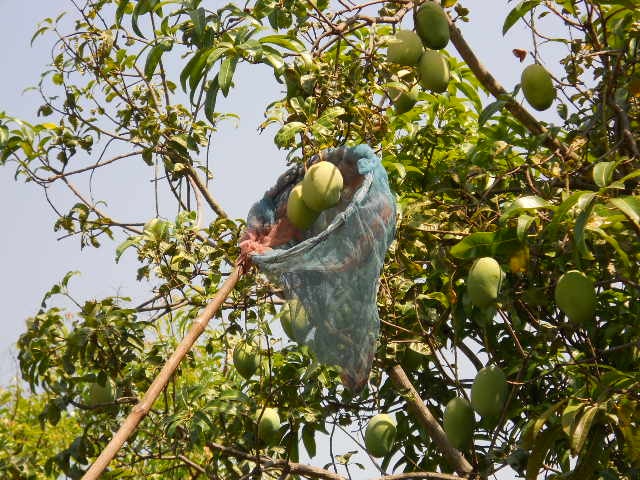
In 3 months, the fruits become ripe, this can be felt on touching the mango, as it becomes soft on ripening. The color turns into a proper yellow shade of the fruit.
Heavy fruit can be seen bulging downwards from the branches. This is an indication the fruit is ready to pluck.
Now, you have 2 ways to get the fruit down either shaking the tree or thrashing the branches to chop off ripen fruits.
Shaking tends to damage the roots and branches of the tree. Also, unripe fruits get disturbed as well. It is highly recommended to thrash the branches by the use of a rope or stick.
This the best way out to spank down your favorite mango fruit. The fruit is ready to explore the markets.
Must Read: Papaya Farming Ultimate Guide
Transporting mango to markets
Once you are done with mango harvesting, it is time to get a reward for the 5 years of hard work done. Proper steps should be taken to avoid any sort of damage to the fruit during the transit period.
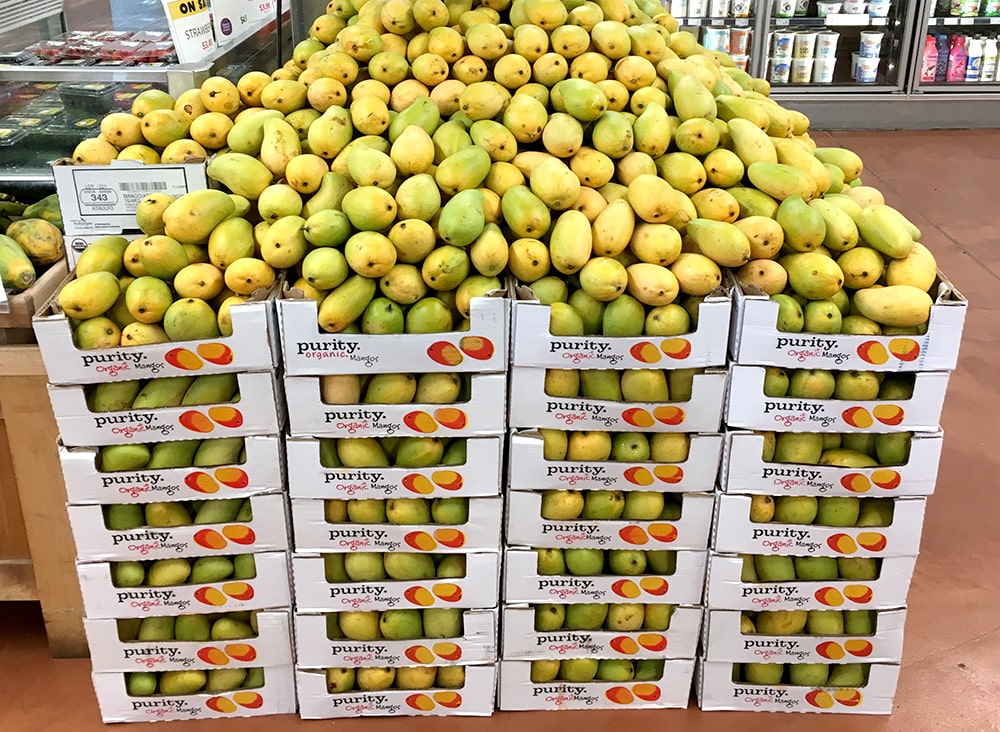
For transporting mangoes, the packaging is done in two ways either using a wooden crate or by using CFB boxes. However, for long-distance transit it advisable to store mangoes in CFB boxes as it is a perishable item.
Wooden crates can hold the mangoes for 8 days maximum. After that, they tend to perish.
When transporting to local nearby markets, wooden crates are the best open as they keep the fruit safe and fresh. And the fruit is ready to consume.
Is mango farming profitable?
To find out the profit ratio of mango farming, let’s calculate the cost of production involved. The cost of the land stands on whether it is owned or rented.
Then comes the plantation cost. This comes to around 2 lakhs per acre per year. And it gives a normal yield of 2.5 -3 tonnes or even up to 9-10 tonnes.
It is a profitable deal. A deal with huge profits. It is one of the most profitable ventures in horticulture. Profitability has a direct relationship with demand for the product in the market.
Mangoes are high in demand. The reason for this is the limited availability and good taste. This fruit is relished by everyone.
This tropical fruit is an evergreen fruit and never will lose it’s charm. Nothing can beat the demand for mango fruit.
Yes, you can say it is a tedious job but the hard work is paid off well. Whether its appreciation in taste or money, a mango farmer lands in huge profits after selling his mangoes in the markets.
People wait for those delicious mangoes in the market every year for their limited availability. So, the idea of mango farming is a sure shot profit deal. Crack this deal and enjoy the benefits.

